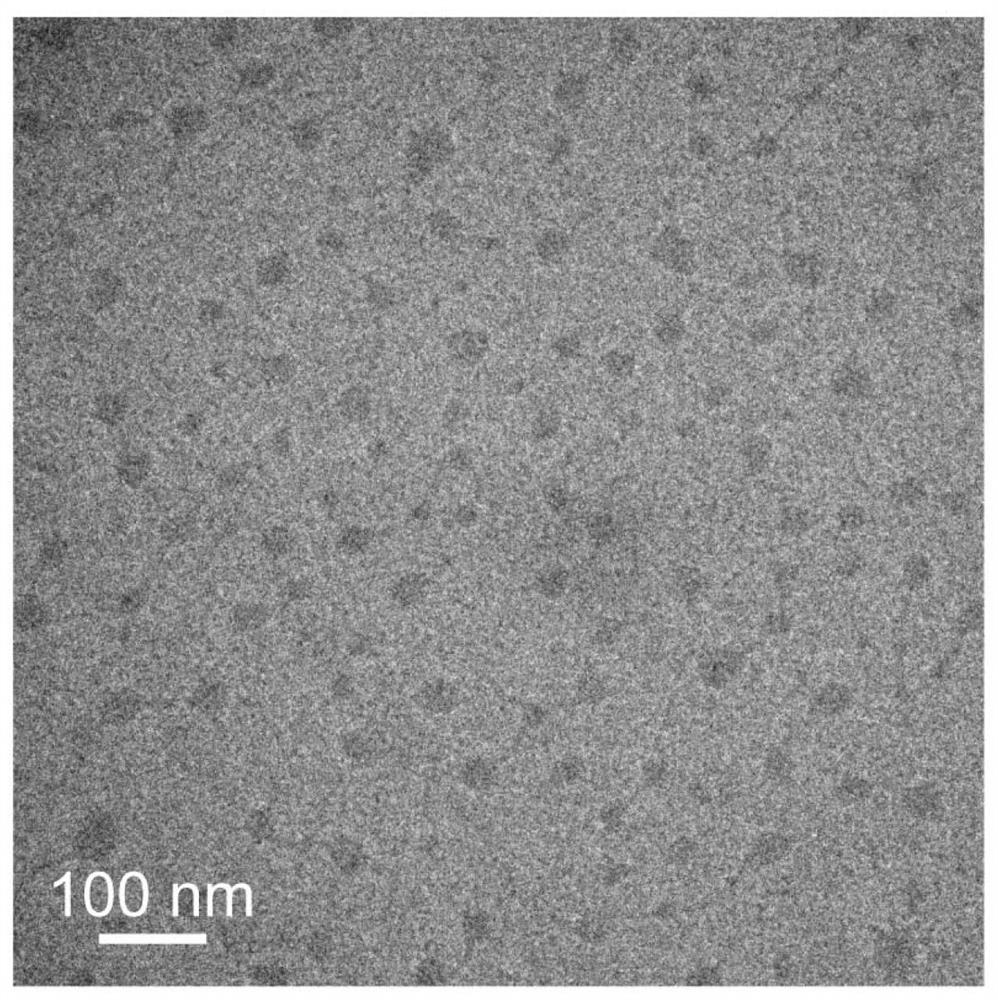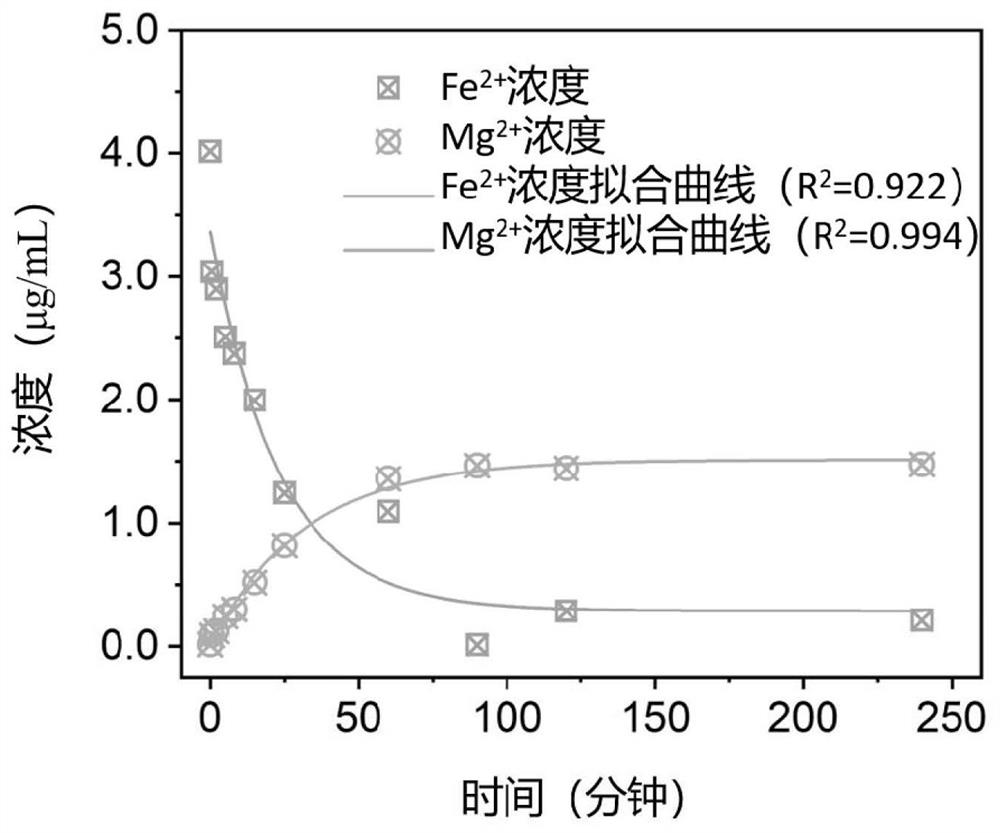Prussian blue-like nano material as well as preparation method and application thereof
A Prussian blue-like, nanomaterial technology, applied in nanotechnology, nanotechnology, nanomedicine, etc., can solve the problems of unsatisfactory treatment effect, small particle size of nanoparticles, large side effects, etc., and achieve excellent biological safety, high hydrophilicity and other problems. performance, low cost
- Summary
- Abstract
- Description
- Claims
- Application Information
AI Technical Summary
Problems solved by technology
Method used
Image
Examples
Embodiment 1
[0047] 88.8 mg of calcium chloride (0.8 mmol) and 300 mg of polyvinylpyrrolidone PVP with a molecular weight of 10,000 were dissolved in 120 mL of a deionized aqueous solution of pH=1 (pH was adjusted by hydrochloric acid) to obtain a calcium chloride solution; 263.4 mg of Potassium ferricyanide (0.8 mmol) was dissolved in 40 mL of a deionized aqueous solution adjusted with pH=1 hydrochloric acid to obtain a potassium ferricyanide solution. Then, it was rapidly added dropwise to the calcium chloride solution at a rate of 200 mL / h and reacted at room temperature (30° C.) for 1 hour. After the end of the reaction, it was subjected to dialysis treatment for 12 hours. Finally, it is collected in a centrifuge tube and vacuum-dried to obtain a Prussian blue-like nanomaterial. The chemical formula of the obtained Prussian blue-like nanomaterial CaPB is KCa[Fe(CN) 6 ], and the average particle size is 36 nm.
[0048] Fe 2+ Binding test: 500 μL of Prussian blue-like nanomaterial so...
Embodiment 2
[0051] The preparation process of the Prussian blue-like nanomaterial in Example 2 refers to Example 1, with the difference that magnesium chloride replaces calcium chloride, and the amount of the substance remains unchanged at 0.8 mmol, that is, 162.64 mg of magnesium chloride hexahydrate. The mass of polyvinylpyrrolidone PVP with a molecular weight of 10,000 remains unchanged at 300 mg. Other conditions remain unchanged. The chemical formula of the obtained Prussian blue-like nanomaterial MgPB is KMg[Fe(CN) 6 ] with an average particle size of 30 nm.
[0052] Cell experiments:
[0053] H9C2 cardiomyocytes were first incubated with different concentrations of DOX for 6 hours to detect the cytotoxicity. Then taking 20 μg / mL DOX as an example, H9C2 cells were first incubated with DOX for 6 hours, and then given different doses of MgPB (10, 20, 40 and 80 μg / mL) or DEX (12.5, 25 and 50 μg / mL) drugs After 6 hours of treatment, cell viability was measured. from Image 6 It ca...
Embodiment 3
[0058] The preparation process of the Prussian blue-like nanomaterial in Example 3 refers to Example 1, with the difference that zinc chloride replaces calcium chloride, and the amount of the substance is 0.5 mmol, that is, 103 mg. and 300 mg of polyvinylpyrrolidone PVP with a molecular weight of 10,000 were dissolved in 60 mL of deionized aqueous solution of pH=1 (pH was adjusted by hydrochloric acid) to obtain a zinc chloride solution; other conditions remained unchanged. The resulting Prussian blue-like nanomaterials are presented as ZnPB nanoparticles with an average particle size of 8 nm, and the chemical formula is Zn 3 [Fe(CN) 6 ] 2 , and formed uniform nanoclusters with a particle size of about 28 nm.
PUM
| Property | Measurement | Unit |
|---|---|---|
| The average particle size | aaaaa | aaaaa |
| The average particle size | aaaaa | aaaaa |
| The average particle size | aaaaa | aaaaa |
Abstract
Description
Claims
Application Information
 Login to View More
Login to View More - R&D
- Intellectual Property
- Life Sciences
- Materials
- Tech Scout
- Unparalleled Data Quality
- Higher Quality Content
- 60% Fewer Hallucinations
Browse by: Latest US Patents, China's latest patents, Technical Efficacy Thesaurus, Application Domain, Technology Topic, Popular Technical Reports.
© 2025 PatSnap. All rights reserved.Legal|Privacy policy|Modern Slavery Act Transparency Statement|Sitemap|About US| Contact US: help@patsnap.com



